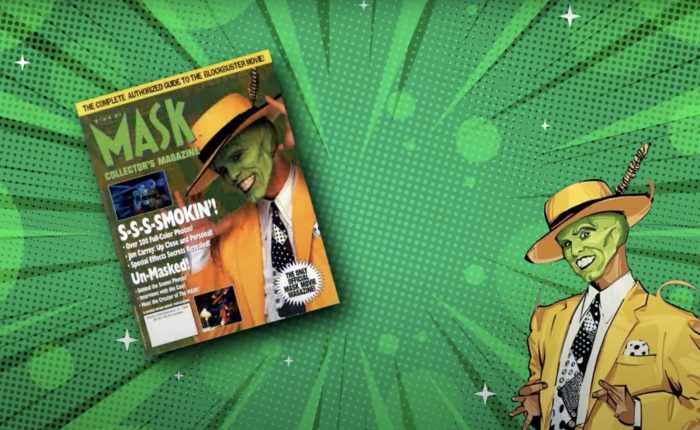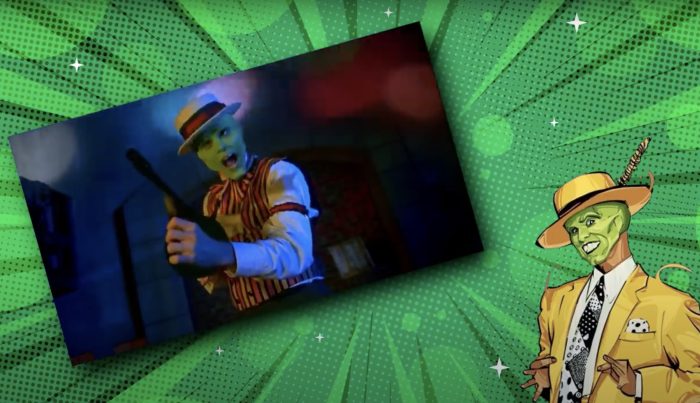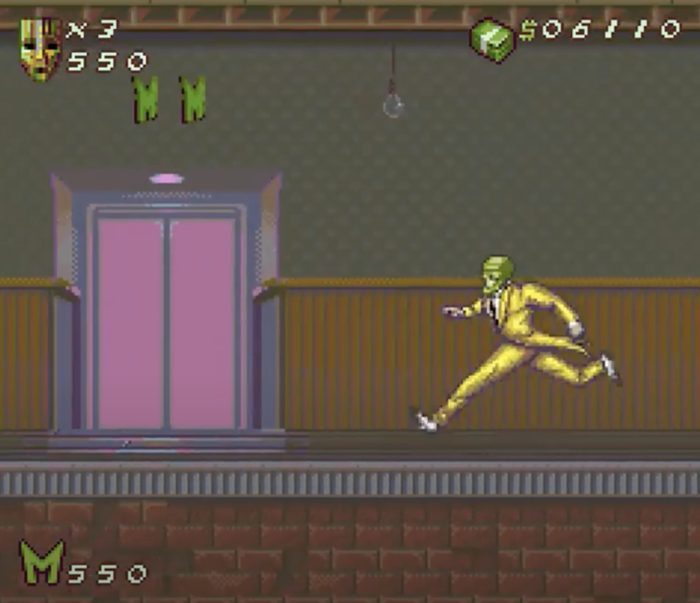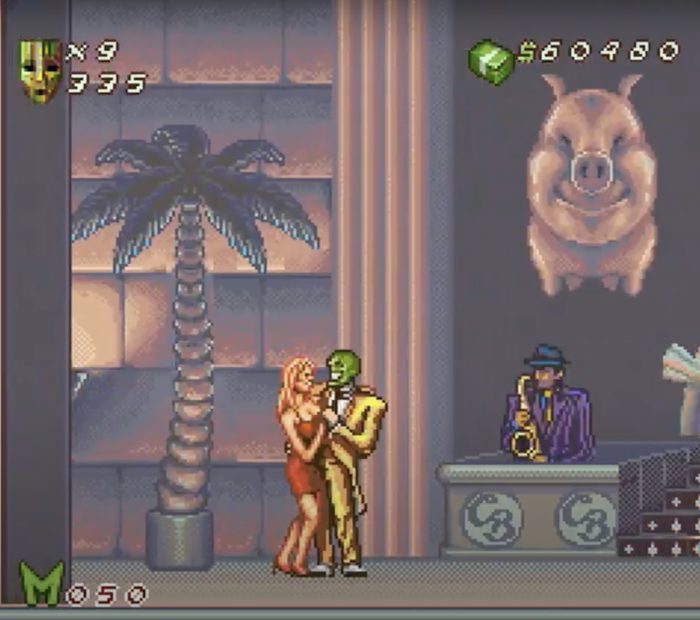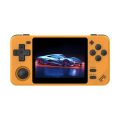Recently, we discussed successful games based on movies but didn’t touch on superhero games. This led me to think about a unique superhero who isn’t exactly one but has made his way from comic book pages to the big screen. I’m talking about The Mask. This hero has a controversial and challenging history. In the late 80s, Dark Horse released comics featuring The Mask, which had little in common with the film starring Jim Carrey. There’s also a game based on The Mask that many might not know about. Today, I want to share the interesting story of The Mask on Super Nintendo, the developers’ journey, why the Genesis version was never released, and what the creators ultimately produced. I hope you support this post with a like.
Discussing the game’s history, it’s important to mention the movie since they are interconnected. New Line Cinema acquired the film rights for The Mask in 1989, but filming only started in August 1993 due to numerous challenges. Initially, the company bosses were not thrilled with Dark Horse’s proposal to turn The Mask into a film. At that time, movies based on comics didn’t have the cult status they have today. Superman was the only truly commercially successful superhero film. Producers doubted the success of a movie featuring comic book heroes. Everything changed when Tim Burton’s Batman was released in 1989, earning an Oscar and grossing $250 million in the US alone, with a budget of $35 million. This success made Hollywood reconsider superheroes from comics.
Interesting experiments followed. In 1990, Dick Tracy hit the big screens, grossing over $100 million with Disney’s support. The Rocketeer appeared in 1991, based on a relatively obscure early 80s series, recouping $46 million in the US against a $35 million budget. This signaled to New Line Cinema to revisit The Mask, and Chuck Russell was appointed director. Russell recalls The Mask as an unexpected project that turned out quite differently from the initial plan. He had previously directed horror films and initially approached The Mask as a horror project, reflecting the comic’s darker tone. The Mask in the comics is more of a sadistic killer than a quirky hero, spreading chaos and violence.
During the scripting process, it became clear that the film should incorporate traits from Tex Avery cartoons, making it more family-friendly and light-hearted. The script included scenes from the comics, such as The Mask making a Tommy gun out of a balloon and firing at bullies. The movie toned down the violence for a broader audience. Jim Carrey was immediately cast for the lead role, feeling the part was written for him, and filming began.
New Line Cinema enlisted Industrial Light & Magic for the special effects, which consumed nearly half the budget. The goal was to make The Mask more humorous and unpredictable than in the comics, influenced by classic MGM and Tex Avery cartoons. The iconic scene where The Mask transforms into a cartoon wolf was particularly challenging for the FX team.
New Line Cinema enthusiastically supported the film’s development and even funded a video game adaptation. THQ was chosen as the publisher, though it wasn’t the best choice given their shaky reputation. They had recently released several poorly received games. Initially, everything seemed promising, with Black Pearl handling the game’s development. The Chicago team worked on the Sega Genesis version, while the Los Angeles team focused on Super Nintendo. They closely collaborated with Industrial Light & Magic to incorporate the film’s graphics into the game.
The Mask is a complex character to adapt for a video game, requiring a good grasp of his traits and abilities. Early game versions even planned to include Milo, the dog, with special abilities. However, after initial interviews, news about The Mask game went silent for nearly a year. A 1994 GamePro article showed new game materials that differed from earlier previews, suggesting a complete overhaul. The new game aimed to align more closely with the film’s tone.
By 1995, only the Super Nintendo version was released, as Sega Genesis development was abandoned. The game was released in Europe and the US, and in Japan in December 1996. The game had to compete on its own merits without the film’s initial hype. Despite these challenges, The Mask on SNES turned out visually appealing and comical, matching the movie’s style. It included familiar scenes and characters but featured non-linear levels resembling mazes, which affected the game’s pace and enjoyment. The game’s mechanics, like using doors and ventilation shafts, weren’t always intuitive, and some gameplay elements could frustrate players.
Ultimately, The Mask game for SNES, while visually and technically impressive in some aspects, missed its chance to coincide with the movie’s release, losing the potential boost from the film’s success. A planned Game Boy Color sequel titled “From Zero to Hero” never materialized, likely due to waning interest in The Mask franchise.
This journey shows the ups and downs of adapting a unique character like The Mask for different media. Though the game is far from perfect, it stands out in my collection for its distinctive style. Share your thoughts on The Mask film and game, and let me know if you managed to complete it. Thanks for your support, and see you in the next post!
The Story of The Mask on Super Nintendo
The history of The Mask on Super Nintendo is a fascinating one, filled with twists and turns that reflect the challenges of adapting a unique character across different media. The journey begins with the acquisition of the film rights by New Line Cinema in 1989. Despite this early start, filming only commenced in August 1993 due to various obstacles. Initially, the company bosses were not enthusiastic about Dark Horse’s proposal to turn The Mask into a film. At that time, movies based on comics didn’t enjoy the same popularity as today. The success of Tim Burton’s Batman in 1989, however, changed this perception, grossing $250 million in the US alone and earning an Oscar. This success made Hollywood reconsider superheroes from comics.
Following Batman’s success, New Line Cinema decided to revisit The Mask, appointing Chuck Russell as the director. Russell recalls The Mask as an unexpected project that turned out quite differently from the initial plan. He had previously directed horror films and initially approached The Mask as a horror project, reflecting the comic’s darker tone. The Mask in the comics is more of a sadistic killer than a quirky hero, spreading chaos and violence.
During the scripting process, it became clear that the film should incorporate traits from Tex Avery cartoons, making it more family-friendly and light-hearted. The script included scenes from the comics, such as The Mask making a Tommy gun out of a balloon and firing at bullies. The movie toned down the violence for a broader audience. Jim Carrey was immediately cast for the lead role, feeling the part was written for him, and filming began.
New Line Cinema enlisted Industrial Light & Magic for the special effects, which consumed nearly half the budget. The goal was to make The Mask more humorous and unpredictable than in the comics, influenced by classic MGM and Tex Avery cartoons. The iconic scene where The Mask transforms into a cartoon wolf was particularly challenging for the FX team.
New Line Cinema enthusiastically supported the film’s development and even funded a video game adaptation. THQ was chosen as the publisher, though it wasn’t the best choice given their shaky reputation. They had recently released several poorly received games. Initially, everything seemed promising, with Black Pearl handling the game’s development. The Chicago team worked on the Sega Genesis version, while the Los Angeles team focused on Super Nintendo. They closely collaborated with Industrial Light & Magic to incorporate the film’s graphics into the game.
The Mask is a complex character to adapt for a video game, requiring a good grasp of his traits and abilities. Early game versions even planned to include Milo, the dog, with special abilities. However, after initial interviews, news about The Mask game went silent for nearly a year. A 1994 GamePro article showed new game materials that differed from earlier previews, suggesting a complete overhaul. The new game aimed to align more closely with the film’s tone.
By 1995, only the Super Nintendo version was released, as Sega Genesis development was abandoned. The game was released in Europe and the US, and in Japan in December 1996. The game had to compete on its own merits without the film’s initial hype. Despite these challenges, The Mask on SNES turned out visually appealing and comical, matching the movie’s style. It included familiar scenes and characters but featured non-linear levels resembling mazes, which affected the game’s pace and enjoyment. The game’s mechanics, like using doors and ventilation shafts, weren’t always intuitive, and some gameplay elements could frustrate players.
Ultimately, The Mask game for SNES, while visually and technically impressive in some aspects, missed its chance to coincide with the movie’s release, losing the potential boost from the film’s success. A planned Game Boy Color sequel titled “From Zero to Hero” never materialized, likely due to waning interest in The Mask franchise.
The Mask (SNES) Playthrough
This journey shows the ups and downs of adapting a unique character like The Mask for different media. Though the game is far from perfect, it stands out in my collection for its distinctive style. Share your thoughts on The Mask film and game, and let me know if you managed to complete it. Thanks for your support, and see you in the next post!
